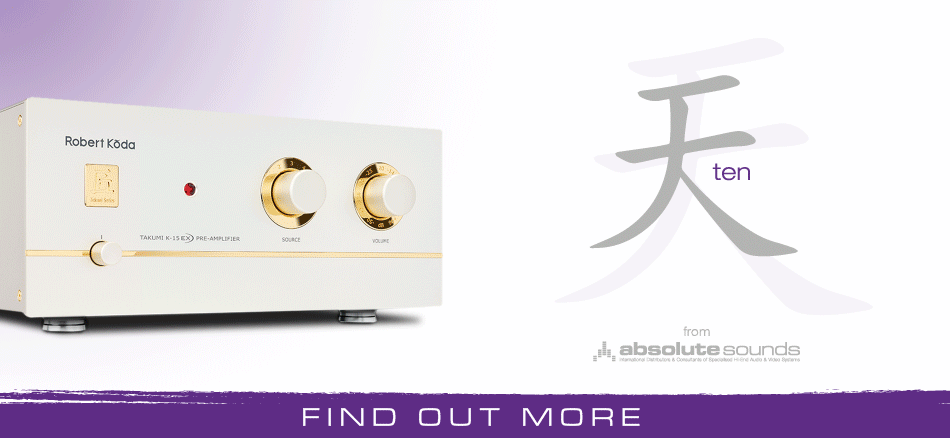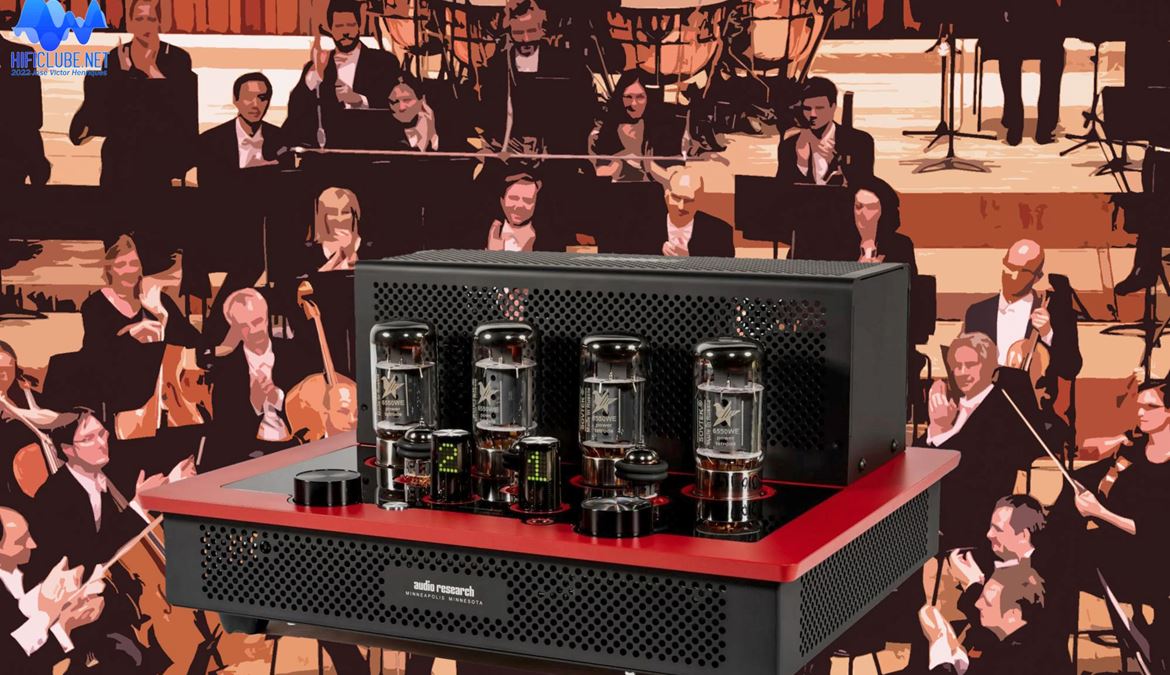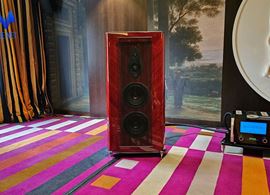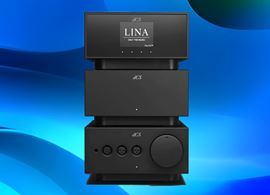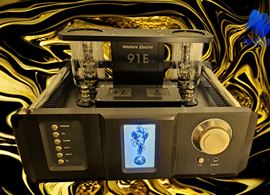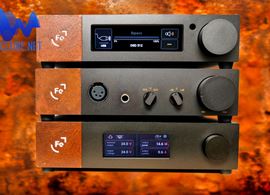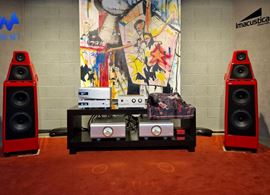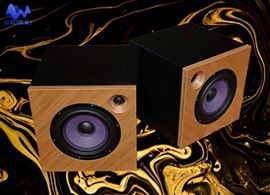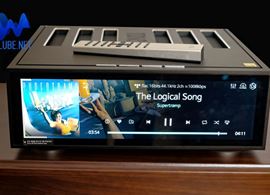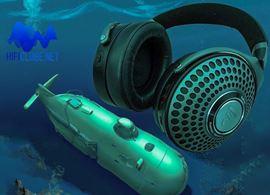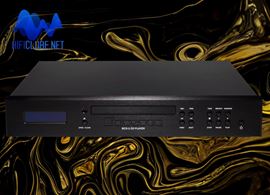The I/50 tube integrated amplifier is Audio Research's new bid to conquer the young and female audience with vacuum technology and design that will delight audiophiles of all ages.
The GSPre/GS150 duo was the last Audio Research amplifier I reviewed for Hi-Fi News in 2015. Since then, I have used ARC amplifiers to test different speakers, but the I/50 is my first ARC amplifier test in seven years. So, one cannot say that I'm an ARC acolyte. However, many of my best acoustic memories are of listening in the 1980s with Audio Research amplifiers driving Magnepan speakers.
Corpus harmonicus
The organic and natural, albeit technically less accurate, sound of tubes has always fascinated me. I am aware that much of this 'organicity' is probably due to 2nd harmonic distortion, which is non-dissonant (natural harmonic structure with close intervals), and thus contributes to the harmonic body of the sound, in contrast to the high odd order distortion of solid-state amplifiers, which is too often compensated with loads of negative feedback to fool technical measurements.
Don't get me wrong. I enjoy a good solid-state amp (even Class D) as much as the next tube amp. And in an age where saving energy is of paramount importance, they are certainly more convenient. But listening to tubes is a unique experience.
In his book Good Vibrations, The Physics of Music, Barry Parker describes a biological mechanism in the basilar membrane of the ear that justifies human perception of dissonant sounds that elude measuring instruments.
Measuring instruments are sensitive to the quantity of distortion and noise e.g., SINAD (1), while the human ear is more sensitive to the quality of distortion (dissonance).
Harmonicity and inharmonicity
The Portuguese musicologist Carlos Marecos wrote in his remarkable Musicology Doctorate Thesis (1):
'...the ear focuses not only on interval relationships but also on the perception of the harmonicity and inharmonicity of structures. This phenomenon is closely related to our auditory perception (p. 78).
And further:
'In a vertical organisation, where sounds are organised according to a natural harmonic structure, the ear does not recognise this grid of equal steps in Hz as such, but this reality is perceived from a qualitative point of view, recognising the harmonicity of the structure, its blending quality, its acoustic balance.'(p.90).
(1) Interaction between interval structures and spectral structures, in instrumental/vocal music, Carlos Marecos, University of Aveiro 2011
Note: Read also here the interesting comment by Prof. Bento Coelho (IST) on this review.
Heavenly music
In the Middle Ages, when it was not yet possible to measure harmonic distortion, composers knew well how to use consonance in organ music to raise the spirit to heaven and dissonance to instil the fear of hell.
Audio Research has always been closer to heaven than hell, a balancing act between good sense and precision, avoiding the direct-heated triode fanaticism: ARC amplifiers, while retaining the acoustic characteristics cherished by tube lovers, usually have a lower distortion factor than many solid-state amplifiers (see specifications below). The I/50 is no exception, as Paul Miller confirmed in his lab test (HiFi News October 2022).
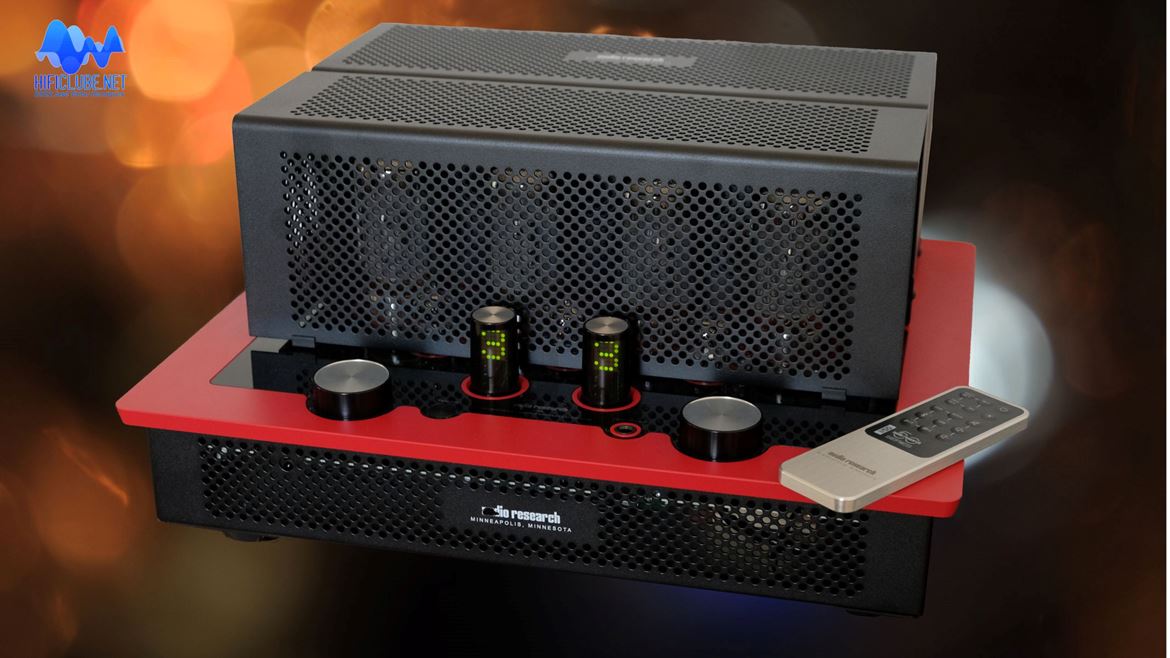
Livio Cucuzza's original industrial design is a blend of unsustainable lightness and solidity.
Ferrari Red
Audio Research is now an independent brand which was bought by former ARC sales manager Trent Suggs, and is no longer part of the McIntosh Group. But, as far as I know, Livio Cucuzza was still responsible for the original industrial design: an artistic blend of unsustainable lightness (the I/50 weighs 18 kg) suggested by the perforated plinth and grilles balanced by the solidity of the thick machined aluminium frame, available in fashionable colours: black, silver, white, red, blue, gold and in the future special finishes.
My I/50 (I wish it were mine) came in Ferrari red, which contrasts nicely with the black glass top plate that houses the on/off switch, the headphone output (6.3 mm), the good-sized rotary knobs for source selection and volume/mute and, of course, the tubes.
Note: By the way, the I/50 also comes with an elegant metal remote control— no need to get up from the sofa, guys.
Back to the future
The two LexieTubes centre pillars serve as a kind of display (sources S1, S2, S3 and BL; and volume 0 to 45). Directly behind them, protected by an optional removable perforated cage, you can find three 6992 tubes (triodes) and two matched pairs (push-pull circuit) of 6559WE tubes (Sovtek!?).
By all means remove the tube cage (incandescent tubes are always a sight to behold), if you don't have kids (and pets) around. However you should not remove the one that protects the power and output transformers for safety reasons. The whole unit sits on five feet (three on the back to support the weight of the transformers).
On the rear panel, we find three RCA inputs (No. 1 serves the Phono module when installed), No. 3 allows bypass when selected plus an XLR input. There is also a slot for the future DAC, which is already equipped with the appropriate inputs and outputs.
Note: ARC informs us that the DAC module for I/50 is already shipping.
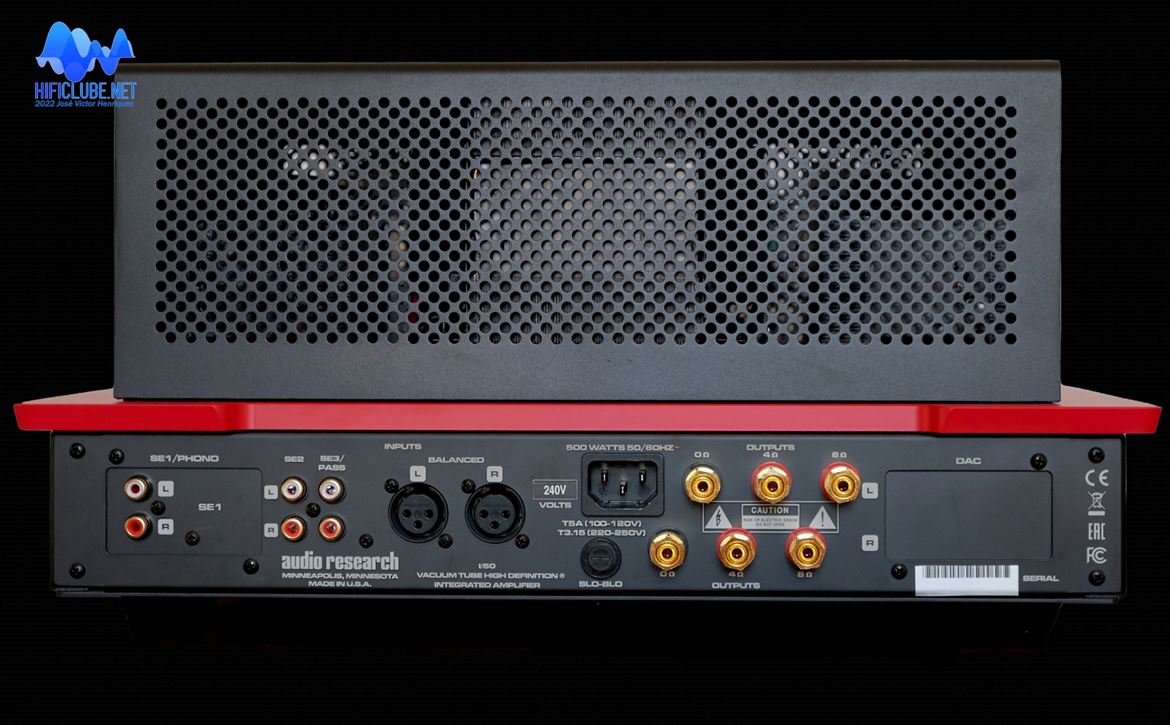
On the rear panel, we find three RCA inputs (No. 1 serves the Phono module when installed), No. 3 allows bypass when selected plus an XLR input. There is also a slot for the future DAC, which is already equipped with the appropriate inputs and outputs.
The gold metal speaker terminals offer impedances of 4 and 8 ohms (ground is common). It plays louder with 8 ohms, but I have always preferred the sound of the 4-ohm connection.
Tube Swap
Audio Research advises against this. The I/50 will also sound good with KT88s. However, the 6550WE tubes have been hand-picked, tested and matched at the factory, so they will always sound better. Also, the bias adjustment is not automatic and can only be done by a technician with the proper equipment.
Note: If you are an incorrigible tube swapper, try an amplifier with auto bias instead.
On the other hand, ARC sees no problem in replacing the 6992 tube triodes with equivalent tubes from another manufacturer. However I don't see a reason to replace the excellent Electro Harmonix that come with it.
Hooked by the ears
Switch on the I/50, watch the 50-second countdown on the LexieTubes, and you are ready to warm-up and go. Tube burn-in is done at the factory, and all I/’50s are guaranteed to have been personally auditioned by Warren Gehl, ARC's 'sonic designer'.
...the I/50 does not use tubes in the headphone amplifier...
I first listened to CDs on my Oppo 95 (balanced connection) with headphones. I have to admit that I was a little disappointed. The I/50 does not use tubes in the headphone amplifier; this is a solid-state affair with a discrete bipolar output stage (67-ohm impedance).
It sounds good. But ARC has opted for low noise versus power, which is sufficient for dynamic headphones like the Pryma, but not enough for low-sensitivity planar magnets like my Hifiman HE1000.
In this case, you can opt for an adapter and connect the headphones directly to the output terminals (watch the volume!). This way, you can enjoy the authentic tube sound of the I/50. Or try a pair of highly sensitive planar magnetic headphones, instead.
Note: Rumour has it that Audio Research will soon launch a tube headphone/amp based on the I/50.
The sound of the I/50 is as luminous as wonderful to listen to. Its intrinsic fluidity and musicality captivate the listener across all musical genres. Its inner brilliance and overall smoothness hook the listener record after record. There is melody, harmony and rhythm. In a word, there is music!
I have a 50-watt Naim Uniti Atom, and there is no way to compare the soundstage in terms of dimension or content. With the I/50, everything on the stage is 'visible’ to the naked eye, from front to back and in between.
I am not talking here about perceived power: the I/50 is a 'pacifist' for home use, not a headbanger for house parties. And it should be connected to mid or even high-sensitivity speakers (and headphones) if you want to fully appreciate the excellent bass performance at higher sound pressure levels. The treble is slightly rounded, true. No doubt a consequence of the higher output impedance typical of tube amps. But it is still luminous and informative.
Guitars that gently weep
If you crave more power, opt for the balanced input, and connect the 4 ohm output to a pair of mid to high sensitivity speakers, like the Devore O/Baby, also introduced at HighEnd 2022. With my Sf Concertinos, I had to turn up the volume to 35/40 (Max:45).
Fortunately, one of the properties of tubes is 'grace under stress', technically known as 'soft-clipping', which has a non-dissonant distortion pattern, as opposed to solid-state hard-clipping, that delivers a cold and unpleasant sound when the peaks of the waveform are 'clipped' as flat as square waves.
It is no coincidence that the best guitarists in the world prefer tube amplifiers for their guitars (2).
'While a moderately overdriven valve amplifier produces strong even harmonics that enhance a sound, an overdriven transistor amplifier creates strong odd harmonics that can cause dissonance.' David Keeports
(2) The warm, rich sound of valve guitar amplifiers
David Keeports Department of Chemistry and Physics, Mills College, Oakland, CA 94613, United States of America. Note: read full article in pdf down below.
Down memory lane
I thought it would be interesting to listen to the same records I had chosen for the GS Pre/150 duo audition back then. It’s not a good idea to rely on auditory memory, but what I published in Hi-Fi News in 2015 was just a click away. And I was able to compare notes for the 'Four Elements' I also found in the ARC I/50 sound: Air (space), Water (fluidity), Fire (dynamics) and Earth (solidity and presence).
...the I/50 shows the same ability to convey feelings of sadness and pain...
The I/50 handles Beethoven's complexity, Berlioz's romanticism, and Handel's religiosity in a more delicate and compassionate but no less musical way than the GS Pre/150 combo. Both the raucity in Dylan's voice and the velvety in Sinatra's were reproduced with the same veracity. Of course, it could not reproduce Supertramp's buoyant productions with the same dynamics and force of a pre/amp setup. However, this depends heavily on the sensitivity of the speakers.
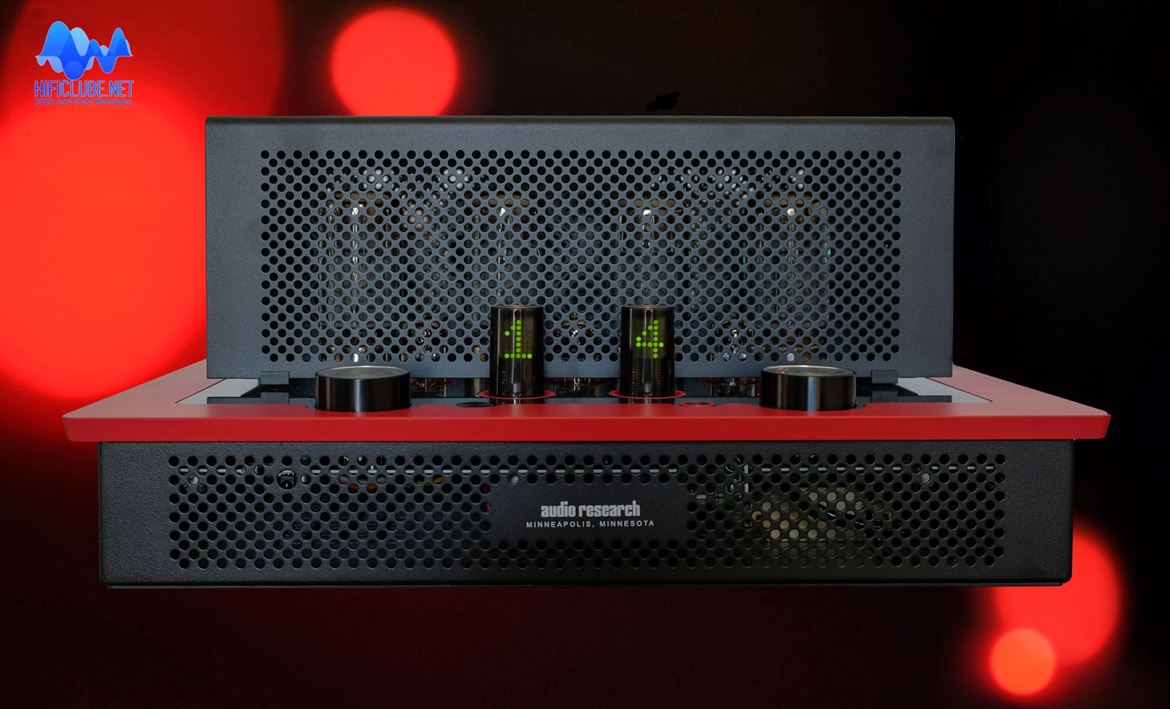
...the I/50 is a modern, beautiful, delicate, and feminine tube amplifier that appeals to a younger audience ...
Two tears of morning dew
The ARC I/50 it also move me when I hear Mariza sing 'Duas lágrimas de Orvalho' (Two tears of morning Dew) from the CD 'Transparente' (EMI 7243 4 77119 2 3), as the I/50 shows the same ability to convey feelings of sadness and pain. And 'Saudade', a Portuguese expression to describe the sorrow of the absence of someone or something that may no longer exist but we still feel as overwhelmingly real.
The unhappy lovers
Should have the courage
To change the way, for when life is gone
What was love is longing
And life is nothing
If you still can, take a step back
Kneel your heart
Kill the past and smile
(Song lyrics free translation)
Kneel your heart
If you are unhappy with your solid-state amplifier, there's still time to take a step back, kill the past and smile with a new love, er, tube amplifier, like the Audio Research I/50, which plays music for human use, not test signals for droids.
The I/50 is a modern, beautiful, delicate and feminine tube amplifier that male audiophiles will fall in love with. And it is so easy to use that I dedicate this review to all my female readers (not many, unfortunately).
Make the I/50 a happy marriage by matching it with a sensitive pair of speakers (headphones).
Note: This review is also a tribute to all tube lovers who have spent years fighting against the technical prejudices of those who refuse to listen because they only have to measure.
Product: Audio research I/50 integrated tube amplifier
Price: € 5990
Factory specifications:
- Power Bandwidth: (-3dB points) 10Hz to 22kHz
- Frequency Response: (-3dB points at 1 watt) 7Hz to 30kHz
- Input Sensitivity: 1.25V RMS for rated output.
- Input Impedance: 100K ohms Balanced, 48K ohms Single Ended
- Output Polarity: Non-inverting. Balanced input pin 2+ (IEC-268)
- Output Taps: 8 ohms, 4 ohms
- Power Requirements: 105-130VAC 60Hz (210-250VAC 50Hz) 252 watts at rated output.
- Tubes Required: 2 matched pair 6550WE; 3-6922 (1 input, 2 driver).
- Dimensions:
- Width 16.5” (42 cm)
- Height 7.25” (18 cm)
- Depth 13.5” (34 cm)
- Weight: 40 lbs (18.1 kg); 51 lbs (23.1kg) shipping weight.
For further information: in Portugal contact IMACUSTICA, or your local dealer if abroad

